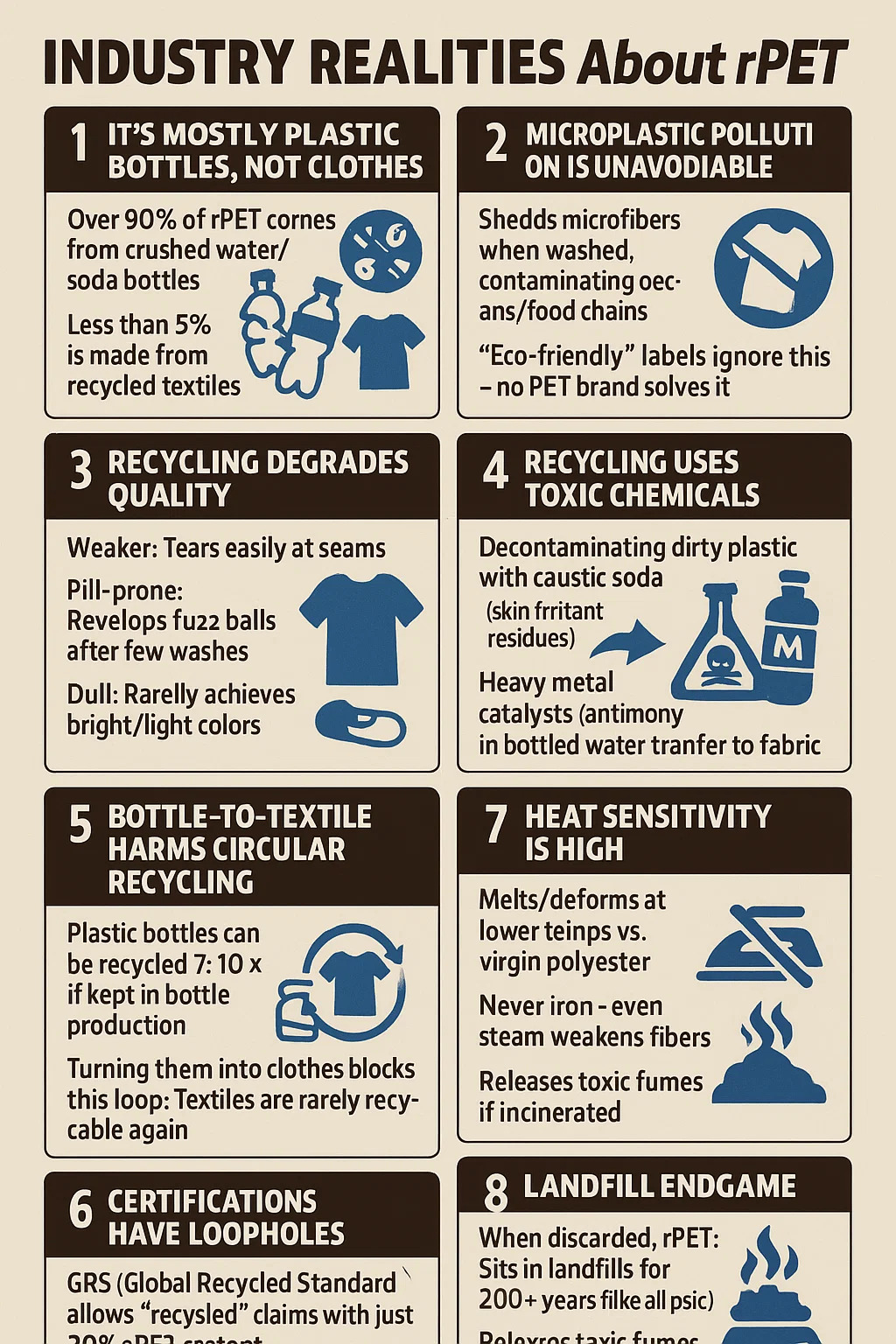Search by posts
Calendar
Industry News
 By Admin
By Admin
Facts you should know about recycled polyester?
About recycled polyester (rPET) based on industry realities:
1. It's Mostly Plastic Bottles, Not Clothes
Over 90% of rPET comes from crushed water/soda bottles.
Less than 5% is made from recycled textiles—despite marketing claims.
2. Recycling Degrades Quality
Each recycle shortens fibers, making fabric:
Weaker: Tears easily at seams.
Pill-prone: Develops fuzz balls after few washes.
Dull: Rarely achieves bright/light colors.
3. Microplastic Pollution is Unavoidable
Sheds microfibers when washed, contaminating oceans/food chains.
"Eco-friendly" labels ignore this—no rPET brand solves it.
4. Bottle-to-Textile Harms Circular Recycling
Plastic bottles can be recycled 7-10× if kept in bottle production.
Turning them into clothes blocks this loop: Textiles are rarely recyclable again.
5. Recycling Uses Toxic Chemicals
Decontaminating dirty plastic requires:
Caustic soda (skin irritant residues).
Heavy metal catalysts (antimony in bottled water transfers to fabric).
6. Certifications Have Loopholes
GRS (Global Recycled Standard) allows "recycled" claims with just 20% rPET content.
"Ocean Plastic" often uses coastal trash (<1% from actual oceans).
7. Heat Sensitivity is High
Melts/deforms at lower temps vs. virgin polyester.
Never iron—even steam weakens fibers.
8. Landfill Endgame
When discarded, rPET:
Sits in landfills for 200+ years (like all plastic).
Releases toxic fumes if incinerated.


